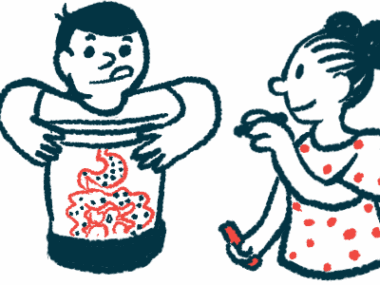Reducing Dietary Iron Found to Ease Signs of SCD in Mouse Model
Iron restriction may be disease-modifying strategy for people: study
Written by |

Reduced dietary iron eased blood vessel blockages and lessened organ damage in a mouse model of sickle cell disease (SCD), a new U.S.-based study reported.
Low iron also reduced gut inflammation in SCD mice and restored a healthy balance of gut microbes.
“Our study demonstrates for the first time that dietary iron restriction reduces VOE [vaso-occlusive episode or crisis] severity and alleviates chronic organ damage in SCD mice,” the researchers wrote.
The team suggested that dietary iron restrictions may be a viable therapeutic strategy for humans, with the potential to modify the course of the inherited blood disease.
The study, “Dietary iron restriction protects against vaso-occlusion and organ damage in murine sickle cell disease,” was published in the journal Blood.
Investigating role of dietary iron in SCD
In SCD, faulty hemoglobin, the protein that carries oxygen, causes red blood cells to acquire a rigid sickle-like shape. This makes it difficult for them to pass through small blood vessels, which can reduce oxygen delivery and lead to damage and inflammation in organs and tissues.
Sickled cells also can block blood flow, resulting in painful vaso-occlusive crises (VOCs).
Because iron is an integral component of hemoglobin, ongoing red blood cell damage, inflammation, and routine blood transfusions used to treat SCD can result in an abnormal iron balance in the body. Iron deficiency has been reported in about 9% of SCD patients, whereas 23% develop iron overload due to repeated blood transfusions, according to researchers.
Iron ingestion, through diet, also has been shown to worsen inflammatory bowel disease. It is linked to changes in the microbes that inhabit the digestive tract, also known as the gut microbiome.
In addition, in SCD mice, the gut microbiome has been tied to immune changes that trigger VOCs and are implicated in organ damage.
To investigate connections between dietary iron, the microbiome, and SCD, researchers at the Albert Einstein College of Medicine, in New York, conducted a series of experiments in SCD mice that were fed an iron-restricted diet.
Tests confirmed lower iron levels in the bloodstream and organs of SCD mice fed an iron-deficient diet compared with control mice that were on a regular iron diet.
First, the team noticed that white blood cell counts were significantly lower in iron-restricted mice than in controls. This was important because SCD patients with elevated white blood cell counts have an increased risk of stroke and acute chest syndrome — a serious lung condition that causes fever, chest pain, and impaired breathing.
No changes in red blood cell counts and hemoglobin were seen, suggesting no worsening of anemia with iron restriction, the team noted.
A higher average level of hemoglobin in red blood cells, called the mean corpuscular hemoglobin concentration (MCHC), is associated with red blood cell sickling and destruction. The iron-restricted diet lowered MCHC without impacting the volume of red blood cells. Decreased MCHC correlated with lower bilirubin, a sign of reduced red blood cell loss.
Iron restriction also improved blood flow measurements, including the speed of red blood cells, the team noted. It also reduced the fraction of aged immune neutrophil cells by more than 50%, “which corresponded with improved [VOC] parameters,” according to researchers.
After challenging SCD mice with TNF-alpha, a pro-inflammatory signaling protein, mice with restricted dietary iron lived longer and were protected against VOCs.
The spleen and liver, which can be enlarged in SCD patients, weighed less after iron restriction, and there was a dramatic reduction in immune cell influx into the lungs, “indicating significantly reduced lung inflammation in SCD mice,” the team wrote. There also was less liver inflammation damage in response to dietary iron restriction.
Regarding the gut, low iron intake reduced intestinal inflammation, restored gut permeability, and decreased fecal bacterial load.
The Firmicutes/Bacteroidetes (F/B) ratio — the balance of two types of bacteria — is widely accepted as an indicator of microbiome-related intestinal health. In SCD patients and mice, the F/B ratio is low, indicating an imbalance. Iron restriction normalized the F/B ratio in SCD mice.
Overall, the study found that “restricting dietary iron intake [in mice] increases total hemoglobin concentration, prevents RBC [red blood cell] sickling and suppresses hemolysis,” or red blood cell destruction.
“Dietary iron restriction is a viable therapeutic strategy in iron-overloaded SCD patients and has the potential to modify the disease further,” the researchers concluded.






